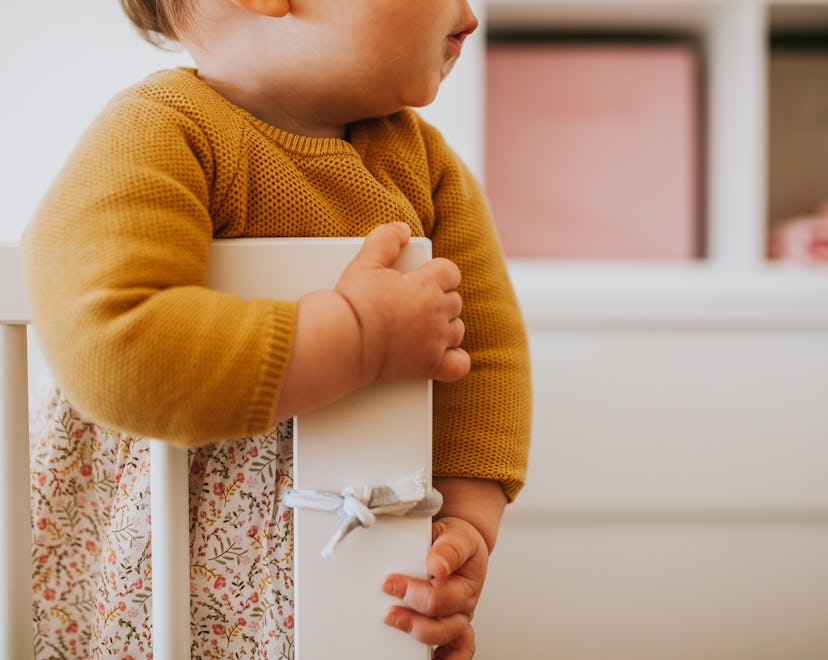sleep

Baby Not Napping At Day Care? These Reasons May Be Why
Here’s why your baby’s fighting sleep.
Getting babies to nap is hard. Once you get them on a routine — a hard-won achievement — even the slightest change can make a baby fussy and you may have to start the process all over again. If your baby’s not napping at day care, it’s quite possibly because the transition from being home to spending time at a care center has disrupted their normal pattern. This new trend of skipping nap time can trickle, creating a domino effect on the family’s routine, too.
“It is very common to hear that naps at day care are shorter and not as great compared to naps at home for infants,” says Erica Threet, certified pediatric sleep consultant. She tells Romper that babies who skip nap time come home overtired, which in turn makes bedtime harder for them and their parents.
Parents are not alone in finding solutions, however. Your child care provider is a part of your village now, and by working together, you can come up with a plan that will help your baby through this period of adjustment.
Why are naps harder at day care?
The short and sweet answer is day care is not your baby’s familiar and comfortable home. The noise level and sounds are different, there are other babies and more adults around, the dimensions of the rooms and the amount of light are different. With all of this change to adjust to, babies may understandably need time to adapt and feel comfortable enough to rest and reach their REM sleep.
Not only is the environment different, but so is the day care routine. “Having the proper amount of wake time is key for falling asleep and taking a long nap,” Threet says.
Day care providers may not have magic solutions, however. “Babies up to 12 months are on their own sleep schedule,” says Lucinda Hightower, a licensed child care provider and owner of, A Happy Place For Children, a children’s day care in Jacksonville, Florida. She says her caregivers let the baby take the lead. “When I notice they are sleepy, I put them down in the beds and rub their backs.”
How parents can help babies nap at day care
Expect a brief period of transition when your baby starts day care, says Hightower. “We usually go by the parent's routine sleep schedule if they already have one,” she says. If they don’t, she says the adjustment period usually takes about a week. Beyond then, you may need to ask questions about the caregiver's routine and maybe offer ideas specific to what helps your baby have a sound nap.
How do the caregivers run through the schedule in your baby’s class? If anything stands out as something that you recognize can impact their naps — maybe the snack time is before playtime, for example, and at home, you have done the opposite — ask them why. Depending on the answer, you may want to offer suggestions for what works for your baby or adjust your own baby’s schedule at home in response. Other avenues to explore:
- Ask about how the caregivers respond when baby fusses at nap time. If your baby is being picked up at the first sign of disturbance or kept awake after rousing, ask your day care to allow your baby a few minutes to try to self-soothe and fall back asleep, says Threet.
- Send something from home to provide a sense of familiarity or comfort. If your baby uses a sleep sack or likes a particular snuggle toy, ask your provider if it can be used during nap time.
- Location may make a difference. “See if there is a corner or a quieter place for the baby to nap,” Threet says.
With sleep issues, remember that babies thrive on consistency and go through natural sleep regressions during their early years. Give these suggestions a try, and hopefully this no-napping phase will soon pass.
Sources interviewed:
Erica Threet, pediatric sleep consultant for Sleep Wise Consulting
Lucinda Hightower, licensed childcare provider, owner of A Happy Place For Children
This article was originally published on